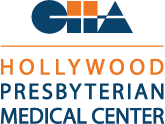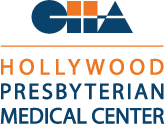|
In this type of glaucoma surgery, a tiny tube shunt is placed in your eye to drain away extra fluid. Less fluid means lower internal eye pressure. When pressure is reduced, the damage to the optic nerve can be slowed or stopped to preserve your eyesight. A glaucoma tube shunt is a flexible tube that drains fluid from inside the eye into a curved plate placed outside the eyeball under the eyelid. The fluid collects in the plate (called a reservoir or bleb) and is then absorbed by the body. Some tube shunts have valves that control the flow of fluid. The glaucoma surgeon places the tube shunt is inside your eye through a tiny cut (incision). When your eye is healed, you will not feel or see the tube shunt unless you look under your eyelid or open your eye wider than usual. What to Expect During Glaucoma Drainage Tube SurgeryThis kind of glaucoma surgery takes about an hour and is performed in a hospital or outpatient surgery center. Plan to have someone to come with you and drive you home. Before the surgery, you are given a dose of medicine through an IV (a needle inserted in your hand), and eyedrops are placed in the eye to numb it. These two medications help you relax and not feel pain, so you can feel comfortable during the procedure. The glaucoma surgeon then looks through a microscope and makes a small cut in the front of your eye. Then the glaucoma drainage tube and plate are carefully guided into place. This will be followed by eyedrops to guard against infection and help healing. After the surgery, your eye may feel sore or dry, and your vision may be blurry for a while. You may have to wear a patch over your eye. Follow the doctor’s instructions for using eye drops or other medications. You may slowly start doing normal activities when you return home. The doctor may tell you not to read, drive, bend over, or do hard exercise for a while to protect your eye as it heals. Please be sure to keep all your follow up appointments. Preserving your eyesight depends on seeing your glaucoma specialist and following instructions carefully. Your doctor will talk to you about a glaucoma management plan to keep your inner eye pressure at safe levels. You may need to use glaucoma medication regularly, even after the surgery. In our next blog, we discuss another type of glaucoma surgery called a trabeculectomy (tra-BEK-you-lek-toe-me). The goal of this series of weekly blogs is to help you feel informed and confident, wherever you are in learning about glaucoma. Visit sceyes.org/blog weekly to learn more. Please provide feedback, suggested topics, or questions about glaucoma in the Contact Us section below. Thank you. |
 РУССКИЙ
РУССКИЙ  ENGLISH
ENGLISH 


